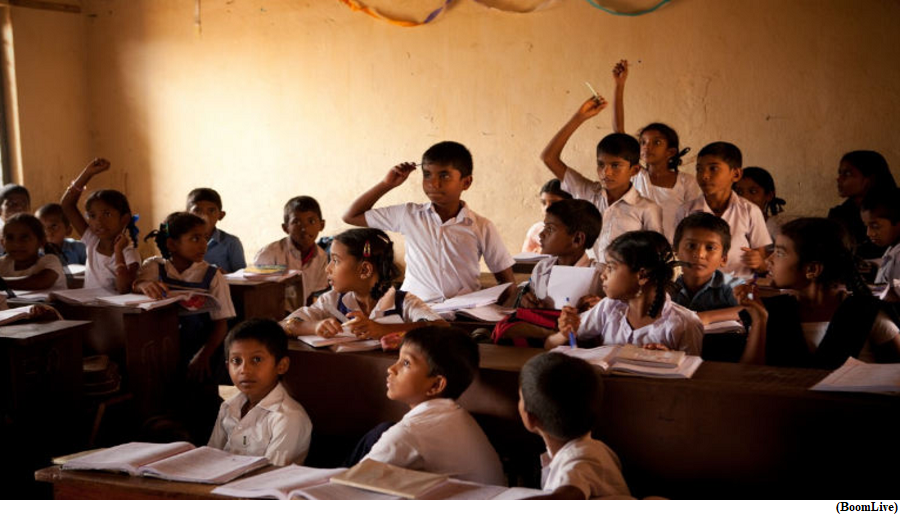West Bengal unveils education policy, stresses on three-language formula (GS Paper 2, Education)

Why in news?
- The West Bengal government has come up with a State Education Policy, 2023, recommending Bangla as a subject along with a three-language formula for Classes V to VIII.
- The policy takes note of the federal spirit of the country’s Constitution and seeks to “avoid over-centralisation in education.
Three-language formula:
- The three-language formula for Classes V to VIII lays stress on the mother tongue of the students.
- It is suggested that the first language (mother tongue) would be the medium of instruction of the school e.g. Nepali in Nepali-medium school, Santhali in Santhali-medium school, Rajbanshi in Rajbanshi-medium school, Bengali in Bangla-medium school.
Key Highlights:
- The State’s Education Policy has rejected changing the school structure to a 5+3+3+4 system from the existing model because it advocates abolishing the Class X board examination.
- The present structure of school education in West Bengal follows a 5+4+2+2 pattern. It is proposed that the same structure should continue to be followed in the State.
- Another key recommendation is to introduce the semester system from Class VIII in a phased manner over the next three years.
- On higher education, the new policy recommends increasing gross enrolment ratio and sharing of resources between universities and colleges.
- Recommending earmarking 6% of the GDP for education, the policy document urges the Centre to “help the State governments allocate a relative share of State GDP for education since education is in the concurrent list of the Constitution”.
- The State’s education policy is being envisaged for the next 13 years.
Background:
- The panel consulted various education policies, including reports on the National Education Policy (NEP), 2020, and the recently published report of the task force for NEP implementation in Maharashtra, and the report on NEP by Kerala.
- West Bengal on May 31, 2023 had announced that it will accept NEP, particularly in colleges and universities run and aided by the State government.
- However, in school education, the government differed on various fronts, including the necessity of having a Class X board examination (Madhyamik examination). The three-language policy is in tune with the NEP.
Scientists grow a model of human embryo in the lab
(GS Paper 3, Science and Technology)
Why in news?
- Due to ethical reasons and technical challenges, studying human post-implantation development has been limited.
- The closest that scientists have come to understand intrauterine development after implantation is by using mouse naïve embryonic stem cells (ESCs) that gave rise to embryonic and extra-embryonic stem cells capable of self-assembling into mouse structured stem cell-based embryo models at the post-gastrulation stage.

Latest research:
- It is at this stage that the embryo differentiates into the three primary founding tissue types of the body.
- But for the first time, researchers were able to extend the findings from mouse to humans by using genetically unmodified human naïve embryonic stem cells.
Key Highlights:
- The researchers were able to develop a “complete” model of the human embryo in the lab from implantation into the uterus to 14 days after fertilization. The model mimics the 3D structure and key hallmarks of post-implantation human embryos up with all the known features found in normal embryos around two weeks old.
- Known as stem cell-based embryo-like structures, or SEMs, they were developed without using sperm, eggs or a womb.
- According to the researchers at the Weizmann Institute of Science in Israel, the models secreted a hormone that turned a commercial pregnancy test to positive.
- The model recreates the organisation of all known lineages and compartments of early post-implantation human embryos, including the epiblast, hypoblast, extraembryonic mesoderm and trophoblast.
- Unlike previous models, this model shows defining hallmarks of integrated embryo models, including all lineages of the post-implantation embryo and structural organisation.
Way Forward:
- They observed proper spatial allocation of cell lineages into defined embryonic and extra-embryonic compartments in the complete absence of fertilisation or interaction with maternal tissues and without the need of providing external targeted signalling pathway induction during the self-organisation of the aggregated cells.
- This SEM platform may enable the experimental interrogation of previously inaccessible windows of human early post-implantation up to peri-gastrulation development.
67 species of reptiles, 59 amphibians recorded in Wayanad forest survey
(GS Paper 3, Environment)
Why in news?
- As many as 67 species of reptiles and 59 species of amphibians were identified in the first herpetofaunal survey that concluded recently in the South Wayanad Forest Division in Kerala.
- Of these, four amphibians and three reptiles were spotted for the first time in the forest division. Of the 126 species identified, 48 amphibians and 21 reptiles are endemic to the Western Ghats.

Key discoveries:
- The important amphibian species recorded during the survey include Starry Night Frog, bearing a constellation of blue dots on its obsidian body; Miniature Night Frog, the tiniest frog in the country; and endangered species such as Malabar Torrent Toad and Red Stream Toad.
- The Naked Dancing Frog, previously associated only with areas in the Wayanad Wildlife Sanctuary, was also sighted during the survey.
- The survey commenced with the recording of the Green Tree Frog and culminated with a compendium of 59 amphibians, of which over 80% are uniquely found in the Western Ghats. Of the 67 reptile species sighted, 21 are unique to the Western Ghats.
- Species like the Wayanad Dravidogecko, Nilgiri Spiny Lizard, and the Nilgiri Forest Lizard added depth to the survey’s significance. The presence of Shieldtail snake, predominantly from Wayanad, brought forth the region’s crucial role in global conservation discussions.
Way Forward:
- This study stressed the need for studies on these amphibian and reptilian species which are mostly neglected.




